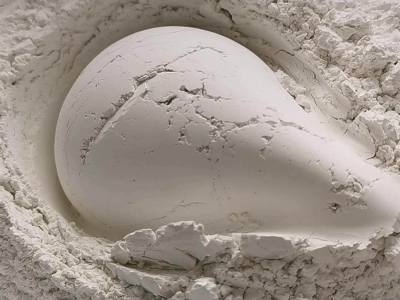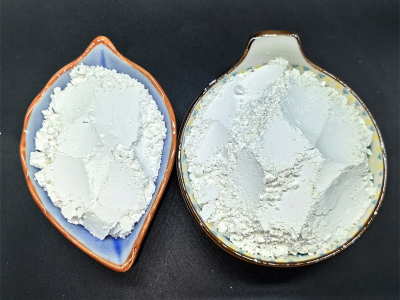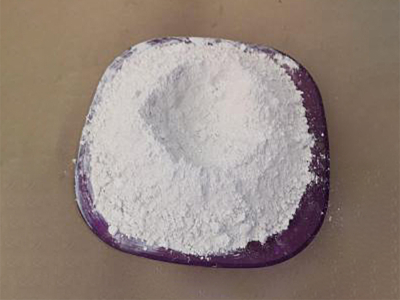Recommended collection! The most detailed fluorite beneficiation technical information introduction
my country's fluorite resources are generally more in the east and less in the west, and more in the south and less in the north. They are distributed in 27 provinces (autonomous regions) across the country, but are concentrated in Hunan, Zhejiang, Mongolia, Jiangxi, Fujian, Henan and other provinces. There are many single-type fluorite deposits in my country, but the reserves are small; the number of co-associated deposits is small and the reserves are large. In a single fluorite ore, the grade of CaF2 is generally 35%-40%, and the reserves of fluorite ore with a grade greater than 65% that can be directly used as metallurgical grade rich ore only account for 20% of the total reserves of a single fluorite deposit. In the fluorite ore associated with metal deposits, the CaF2 grade in the ore is generally only 7%-20%. Although the associated fluorite deposits have large resources, they are of low grade and are often comprehensively recycled when the main ore is mined. my country's large and medium-sized fluorite mining areas include Zhejiang Wuyi, Hunan Shizhuyuan, Hebei Jiang'an, Jiangxi De'an, Inner Mongolia Sumochagan Aobao, and Guizhou Qinglong Factory.
Status of Fluorite Utilization
Fluorite is widely used as a strategic non-metallic raw material. Fluorite can be divided into three categories according to its grade and use:
Acid-grade fluorite used in the chemical industry, the mass fraction of fluorite is greater than 97%;
Metallurgical grade fluorite used for steelmaking and electrolytic aluminum, the mass fraction of fluorite is 65%-85%;
Sulfide-type fluorite ore: Its mineral composition is basically the same as that of quartz-fluorite, but it contains more metal sulfides, and sometimes the content of lead and zinc can reach industrial grades.
At present, the flotation method is mainly used for beneficiation and purification of fluorite at home and abroad.
Quartz-Fluorite Type
Quartz-type fluorite ore is mainly composed of fluorite (about 85%) and quartz, with only a small amount of calcite, barite and sulfide.
The key to the selection is mainly to reduce silicon in concentrates.
Coarse-grained embedded fluorite is easy to select. The fatty acid type collector is used, the slurry adjuster is sodium carbonate, and the quartz inhibitor is water glass. The high-quality fluorite concentrate can be obtained through a coarse and multi-fine process.
The flotation reagent of fine-grained embedded quartz-type fluorite ore is the same as that of coarse-grained embedded quartz-type fluorite ore, but due to the small embedded particle size of the target minerals, it is necessary to strengthen the grinding, and the stage grinding stage is used for separation. process flow.
Example 1: Research on beneficiation test of a quartz-type fluorite ore in Hunan
In a quartz-type low-grade fluorite ore, the main recoverable mineral is fluorite with a grade of 30%, the main gangue mineral is quartz, followed by calcite, feldspar, mica, etc.
Process parameters: the fineness of rough dressing and grinding is -200 mesh, accounting for 42.52%, water glass + ZN608 is used as inhibitor, fluorite low temperature collector ZN136 is used as collector, 1 coarse, 1 sweep, 7 concentrate, and 1 concentrate Regrinding, the closed-circuit process of returning to the medium ore sequentially, can obtain fluorite concentrate with a CaF2 grade of 97.45% and a recovery rate of 92.71%.
Process flow of beneficiation test of quartz-type fluorite ore
Example 2: Experimental study on beneficiation of fine-grained embedded quartz-type fluorite ore
A fine-grained inlaid quartz-type fluorite ore has a fluorite content of 32.75%. The inlaid relationship between fluorite and quartz in the ore is complex, and the inlaid granularity is fine. Fine grinding is required to dissociate the fluorite and quartz monomers.
Technological parameters: The experimental study adopts one roughing, one sweeping, seven beneficiation, selecting a section of medium ore to directly cast tails, and selecting a section of flotation concentrate to regrind and float the process flow, using the self-developed ZN136 as the fluorescent Low temperature flotation collector, under the condition of slurry temperature of 5~10℃, the beneficiation index obtained by the laboratory is fluorite feed CaF2 32.52%, CaF2 97.55%, SiO2 1.36% in concentrate, fluorite recovery rate Under the condition of slurry temperature of 5℃, the industrial production index is 30.14% CaF2 for fluorite ore, 97.37% CaF2 and 0.81% SiO2 in concentrate, and the recovery rate of fluorite is 89.67%.
Process flow of beneficiation test of fine-grained embedded quartz-type fluorite ore
Calcite-fluorite type
Calcite-type fluorite ore is mainly composed of fluorite and calcite (content up to 30% or more), with a small amount of quartz, which can form quartz-calcite-fluorite-type ore.
The main reason why calcite-type fluorite ores are difficult to separate is that both calcite and fluorite are calcium-containing minerals with similar surface physical and chemical properties.
Both fluorite and calcite are calcium-containing salt minerals, and their solubility is similar. Therefore, the flotation separation of such ores is difficult. The selection of suitable collectors and inhibitors is the key to achieving the separation of fluorite from calcite. At the same time, reasonable process flow and process conditions are also important factors to improve the flotation index. Combined agents and new agents are widely used in the sorting of this type of fluorite ore.
To achieve the separation of calcite and fluorite, the pH value of the slurry must be adjusted, and then a collector can be used to achieve a good separation effect. In the pH range of 8 to 9.5, using fluorite low-temperature collector ZN136 as the collector, both ores can float, but in weakly acidic medium, calcite has lower floatability than fluorite. Use water glass, salted water glass, acidified water glass, sodium hexametaphosphate, lignosulfonate, dextrin, tannin, calcium carbonate special inhibitor ZN608, etc. to be used alone or in combination to inhibit calcite, so as to achieve the purpose of separation .
The flotation separation process of barite-type fluorite ore is divided into two types: inhibiting barite from floating out of fluorite and inhibiting fluorite from floating out of barite. The key to flotation separation of barite and fluorite lies in the choice of inhibitor.
Example 1: Application of Combination Inhibitors
Using oleic acid as the collector, dextrin + ferric chloride as the combined inhibitor of barite, through 1 coarse 1 sweep 7 fine flotation process, the fluorite with a CaF2 grade of 97.87% and a recovery rate of 79.26% was obtained concentrate, and barite concentrate with a BaSO4 grade of 94.62% and a recovery rate of 72.53%.
Fluorite barite separation test process flow
Example 2: Inhibitor Combination Application
ZN608 can selectively inhibit barite, water glass can selectively inhibit quartz and improve the dispersity of pulp. Aluminum sulfate can not only assist in inhibiting barite, but also weaken the inhibiting effect of water glass on fluorite. To achieve the purpose of inhibiting barite and quartz at the same time.
Sulfide ore-type fluorite mines generally use sulfide ore collectors to preferentially select metal sulfide minerals, and then use fatty acid collectors to recover fluorite from flotation tailings. In addition, processes such as roasting and leaching can also be used to extract valuable metals and decompose fluorite. The process flow is relatively simple, and high-quality fluorite products can be prepared while comprehensively recycling valuable metals.



